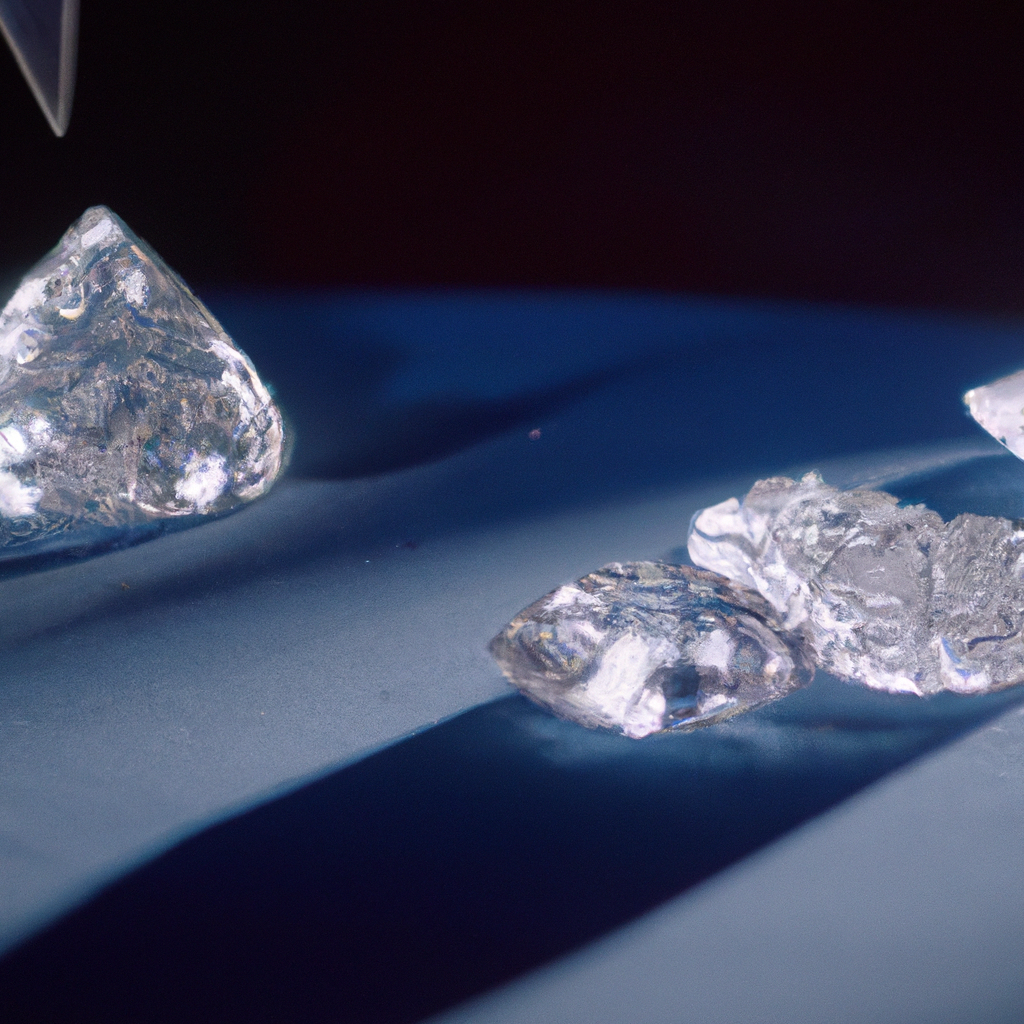Diamonds have been a symbol of love, luxury, and prestige for centuries. They are one of the most sought-after gemstones in the world and are known for their exceptional hardness, brilliance, and durability. But how are diamonds formed and mined? This article provides a comprehensive overview of diamond formation, mining, and the diamond industry as a whole.
Diamond Formation
Diamonds are formed deep beneath the Earth’s surface, typically at depths of 140-190 kilometers. They are formed from carbon under high pressure and temperature conditions that exist in the Earth’s mantle. The process of diamond formation is known as “crystallization” and takes millions of years to complete.
There are two types of diamonds – natural diamonds and synthetic diamonds. Natural diamonds are formed over millions of years in the Earth’s mantle, while synthetic diamonds are made in a laboratory using various techniques. Synthetic diamonds are not considered “real” diamonds, but they are used in various industries, including electronics, construction, and cutting tools.
Diamond Mining
Diamond mining is the process of extracting diamonds from the Earth’s crust. There are two main types of diamond mining – open-pit mining and underground mining.
Open-pit mining is used to extract diamonds from the Earth’s surface, typically in areas where the diamond deposits are located close to the surface. The process involves removing the top layer of soil and rock, known as “overburden,” to expose the diamond-bearing ore. The ore is then extracted and processed to separate the diamonds from the other minerals.
Underground mining is used to extract diamonds from deeper deposits, typically below 200 meters. The process involves digging tunnels or “shafts” into the ground to access the diamond-bearing ore. The ore is then extracted and processed in a similar way to open-pit mining.
Diamond Exploration
Diamond exploration is the process of searching for new diamond deposits. It involves a combination of geological, geophysical, and geochemical techniques to identify areas with high potential for diamond-bearing rocks.
Geologists use various tools and techniques to study the geology of an area, including mapping, sampling, and drilling. Geophysicists use instruments to measure the physical properties of the rocks, such as their electrical conductivity, magnetism, and density. Geochemists analyze the chemical composition of the rocks to identify minerals that are associated with diamonds.
Diamond Deposits
Diamond deposits are found in various geological settings, including kimberlite pipes, alluvial deposits, and marine deposits.
Kimberlite pipes are the most common type of diamond deposit. They are volcanic pipes that formed when magma from the Earth’s mantle rose to the surface and cooled, forming a cone-shaped deposit. Kimberlite pipes are typically located in areas with ancient cratons, which are stable regions of the Earth’s crust that have not undergone significant tectonic activity.
Alluvial deposits are formed when diamonds are eroded from their primary source and transported by rivers and streams. They are typically found in areas with high rainfall and mountainous terrain, where erosion is more common.
Marine deposits are formed when diamonds are transported by ocean currents and deposited on the sea floor. They are typically found in areas with high wave energy and strong currents.
Diamond Industry
The diamond industry is a global business that involves the mining, processing, and trading of diamonds. It is a highly regulated industry that is governed by various international organizations, including the Kimberley Process Certification Scheme, which aims to prevent the trade of “blood diamonds” or diamonds that are used to finance conflict.
The diamond industry is also characterized by a complex supply chain that involves multiple stakeholders, including mining companies, diamond cutters and polishers, wholesalers, and retailers. The supply chain is also highly fragmented, with many small-scale miners and traders operating in developing countries.
Conclusion
In conclusion, diamonds are one of the most valuable and sought-after gemstones in the world. They are formed deep beneath the Earth’s surface over millions of years and are extracted through a combination of open-pit and underground mining. Diamond exploration is a complex process that involves a combination of geological, geophysical, and geochemical techniques. Diamond deposits are found in various geological settings, including kimberlite pipes, alluvial deposits, and marine deposits. The diamond industry is a global business that involves the mining, processing, and trading of diamonds and is governed by various international organizations.







